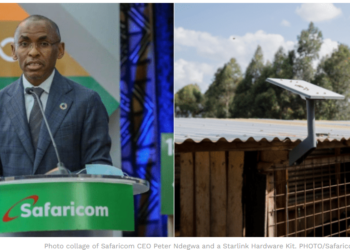The SACCO Supervision Annual Report 2024 presents a detailed review of the operations and performance of regulated SACCOs in Kenya during the year. According to the report, there were 355 regulated SACCOs in operation, consisting of 177 deposit-taking SACCOs (DT-SACCOs) and 178 non-withdrawable deposit-taking SACCOs (NWDT-SACCOs). These institutions recorded strong financial growth despite challenges in the operating environment.
The total assets of regulated SACCOs grew by 10.7% to reach Kshs 1.08 trillion, crossing the trillion mark for the first time. Gross loans advanced to members increased by 11.4% to Kshs 845.1 billion, reflecting sustained demand for affordable credit. Deposits and savings mobilized rose by 9.9% to Kshs 749.4 billion. Capital reserves and retained earnings also showed remarkable growth of 17.6%, reaching Kshs 197.5 billion, largely driven by higher retention of surpluses. This highlights the resilience of SACCOs, which managed to build institutional capital even after absorbing investment impairments during the year.
Despite this positive performance, the report highlights concerns over the concentration of assets and deposits in a few large SACCOs. For instance, 60 large-tier SACCOs controlled 77% of total assets, while 40 large SACCOs held nearly 66% of all deposits. This concentration creates supervisory efficiencies but also exposes smaller SACCOs to financial vulnerability, as many struggle with limited revenues and high compliance costs.
The industry’s financial soundness improved across key stability indicators. For DT-SACCOs, the core capital to total assets ratio rose to 17.3%, well above the required 10%. Institutional capital to assets also strengthened, rising to 12.0%. NWDT-SACCOs recorded similar improvements, with their core capital to assets ratio increasing to 10.87%. Loan portfolio quality also improved slightly, with 86.7% of loans performing in line with contracts, while the non-performing loan ratio reduced marginally to 8.4% from 8.5% in 2023.
Service delivery in SACCOs continued to evolve with increased adoption of digital channels. The number of SACCO agents rose to 4,247 in 2024, handling transactions worth Kshs 31.7 billion. More SACCOs also deployed USSD codes and internet-enabled platforms to expand access to their financial services.
In conclusion, the report underscores the resilience and importance of regulated SACCOs in Kenya’s financial sector. Their growth in assets, deposits, and loans confirms their critical role in financial inclusion, though challenges remain in asset concentration, loan quality, and ensuring sustainability for smaller SACCOs.

















